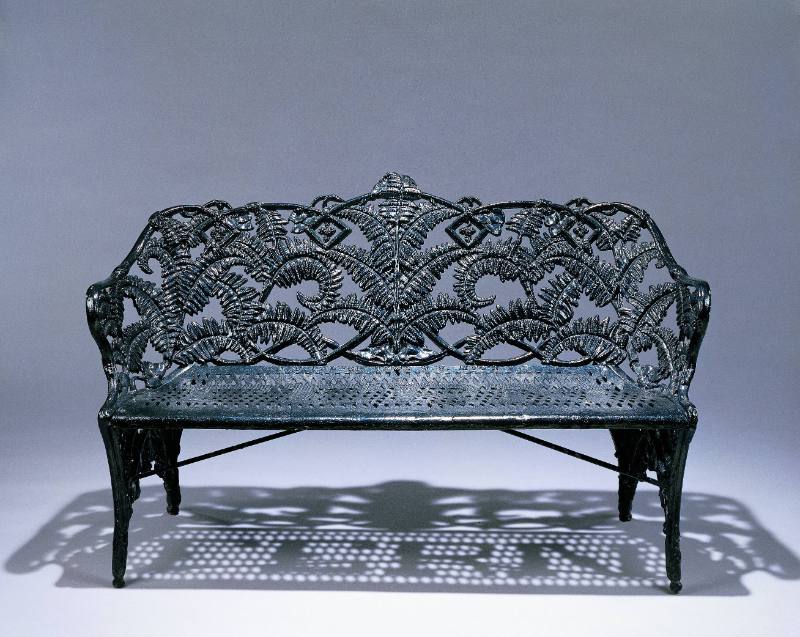Bench
Artist
Phoenix Iron Works
(American, 1863 - 1906)
Date1870-1880
MediumCast iron
DimensionsOverall: 35 1/8 × 57 3/4 × 23 1/2in. (89.2 × 146.7 × 59.7cm)
ClassificationsFURNISHINGS
Credit LineMuseum Purchase
Terms
Object number84.16.1-2
DescriptionBack: molded fern leaves; legs braced with fern leaves and branches; diamond grid;'FERN' spelled out on seat grid.On View
Not on viewCollections
Copyright<a rel="license" href="http://creativecommons.org/licenses/by-nc/4.0/"><img alt="Creative Commons License" style="border-width:0" src="https://i.creativecommons.org/l/by-nc/4.0/80x15.png" /></a><br />This work is licensed under a <a rel="license" href="http://creativecommons.org/licenses/by-nc/4.0/">Creative Commons Attribution-NonCommercial 4.0 International License</a>.
Label TextIn the mid-nineteenth century, cast iron was elevated from a utilitarian metal to a substance from which to fabricate aesthetic art forms. Ease of manufacture and of assembly of parts made it an ideal industrial material for buildings and outdoor furnishings. The use of cast iron was part of a wider Victorian movement to tame nature through "civilizing" artifacts. The design of the MWPI settee-derived from a popular Victorian houseplant-implies the dominance of artifice over nature.
In 1853 Chauncey Palmer established an independent foundry in Utica. His business was twice destroyed by fire. In 1863 Palmer rebuilt his company and changed the name from C. Palmer & Company to Phoenix Iron Works, in reference to the mythological bird that rose renewed from its own ashes. Advertisements illustrate that, in addition to cast-iron seating, Phoenix Iron Works manufactured urns, garden statuary, fountains, fencing, architectural castings, and hardware.
ATD
The negative and positive visual aspects of cast-iron furniture are often equally important, adding an air of lightness to a physically weighty object. On this settee the pattern name "fern" is worked into the seat. (Look at the shadow below.) The design of the MWPAI settee was copied from the popular "fern and blackberry" pattern registered in 1875 by the English firm Coalbrookdale Company.
In 1853 Chauncey Palmer established an independent foundry in Utica. His business was twice destroyed by fire. In 1863 Palmer rebuilt his company and changed the name from C. Palmer & Company to Phoenix Iron Works, in reference to the mythological bird that rose renewed from its own ashes. Advertisements illustrate that, in addition to cast-iron seating, Phoenix Iron Works manufactured urns, garden statuary, fountains, fencing, architectural castings, and hardware.
ATD
(August 2002)














